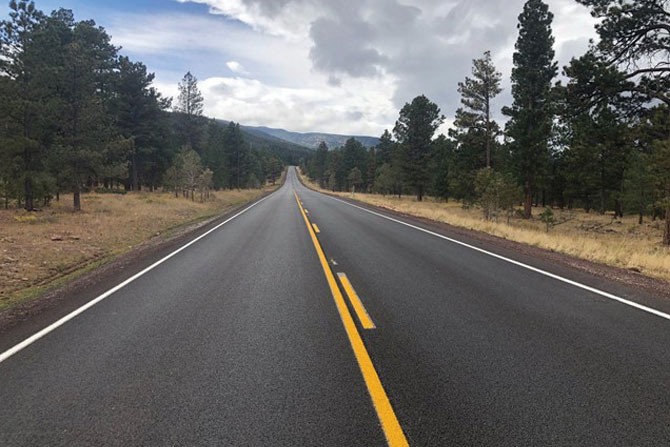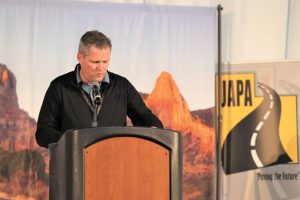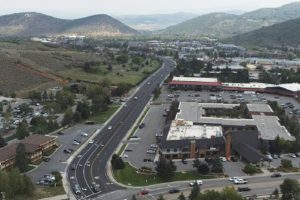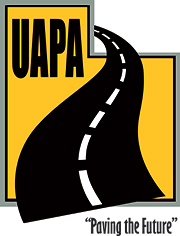Quality in Construction Winner: UDOT Region 3 - Pavement Preservation, SR-44 (MP 0 to MP 14)
Name of project: Pavement Preservation, SR-44 (MP 0 to MP 14)
Project location: SR-191 Greendale Junction to FR-094
Project start: May 24, 2021
Project completion: Nov. 11, 2021
Key project team members:
- UDOT Region 3 — Clayton Weaver and Fred Priebe
- Burdick Materials, A CRH Company — Lee Goodrich and Tony Hickman
- Wall Consultant Group — Brent Schvaneveldt
- Civco Engineering— Troy Ostler
- Jones & DeMille — Bret Sorenson
- Coughlin Company — Reed Poleszak
Project overview:
The project consisted of a profile grind, scrub seal and 2-inch spray paver applied SMA.
What makes the project unique? The roadway was rough with considerable cracking, and the asphalt was thin (1.5-inches to 5-inches). Due to budget constraints, the asphalt could not be removed and replaced with a 4.5-inch overlay. The team used a profile mill with a maximum depth of 1-inch to improve smoothness. Next, they applied a scrub seal to help fill the cracks, and then they used a spray paver to apply a 2-inch SMA overlay.
This project was Coughlin Company’s first one using Lidar and Topcon software to analyze, design and grind the pavement surface to improve both profile and cross-slope at the same time. This project was also the first spray paver project for Burdick Materials. The crew had some challenges learning the process, including additional paver cleaning and maintaining a consistent paving speed. Since belly dumps were not allowed, Burdick Materials used live bottom dumps and end dumps; those choices provided a cleaner project with less tracking and asphalt chunks off the project.
The spray paver is heavier than standard pavers, so starts and stops didn’t affect the smoothness as much. The smoothness for this section was improved from an initial MRI of 165 to a final MRI of 58.5. The contractors, consultants, and the owner worked well together and did a spectacular job dealing with the new processes and paving techniques.
Projects and studies from the Midwest have shown that underseals and spray-paver applied overlays reduce cracking, improve impermeability, have longer than typical service life, and lower life cycle costs. This project is anticipated to last longer and perform better than a standard mill and overlay for less overall life cycle cost.








